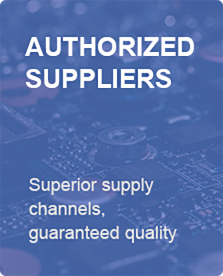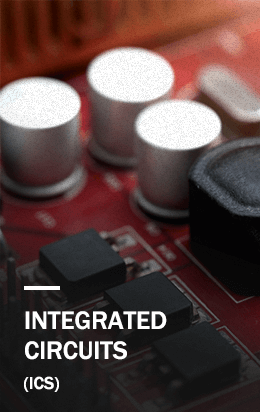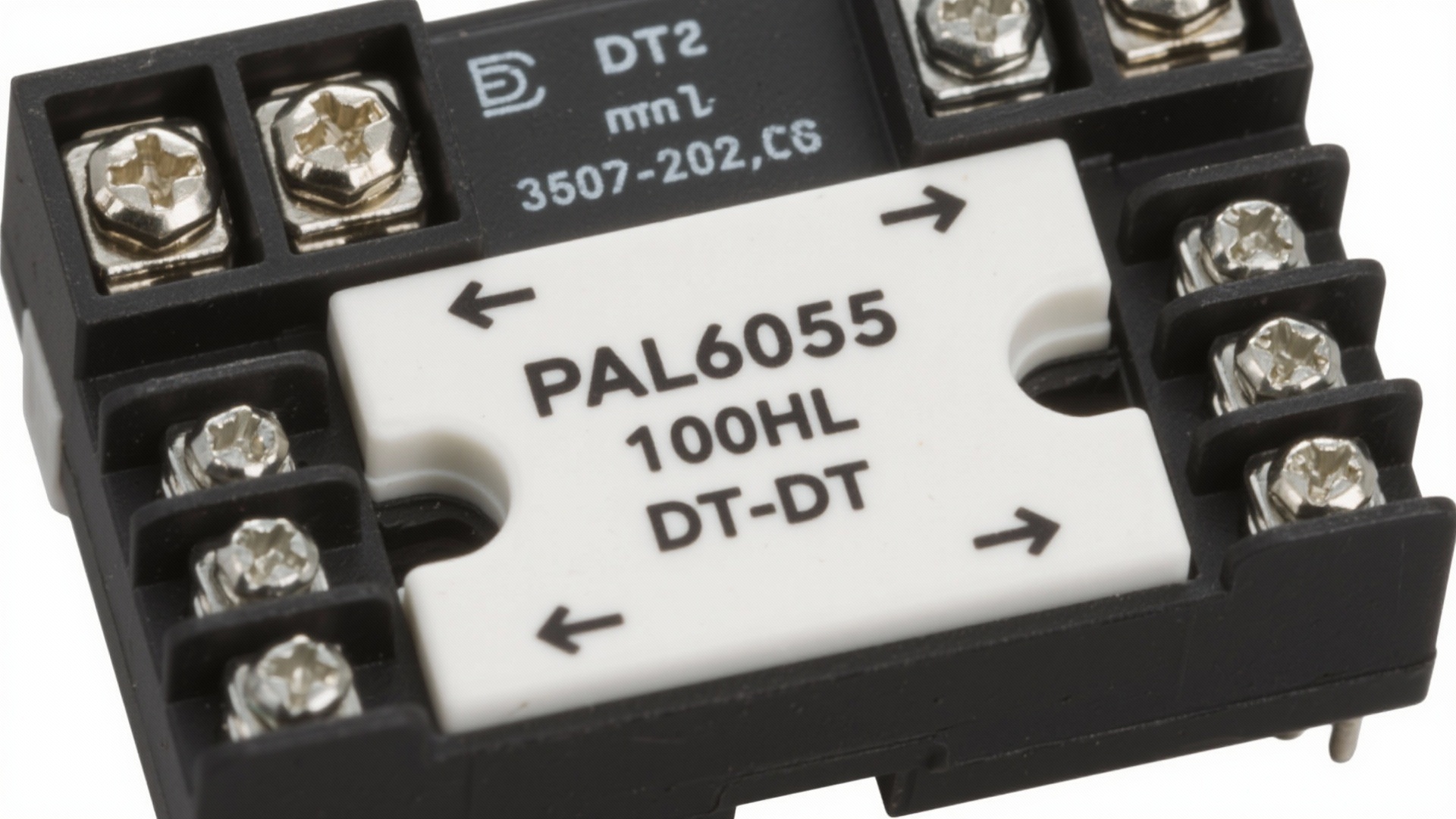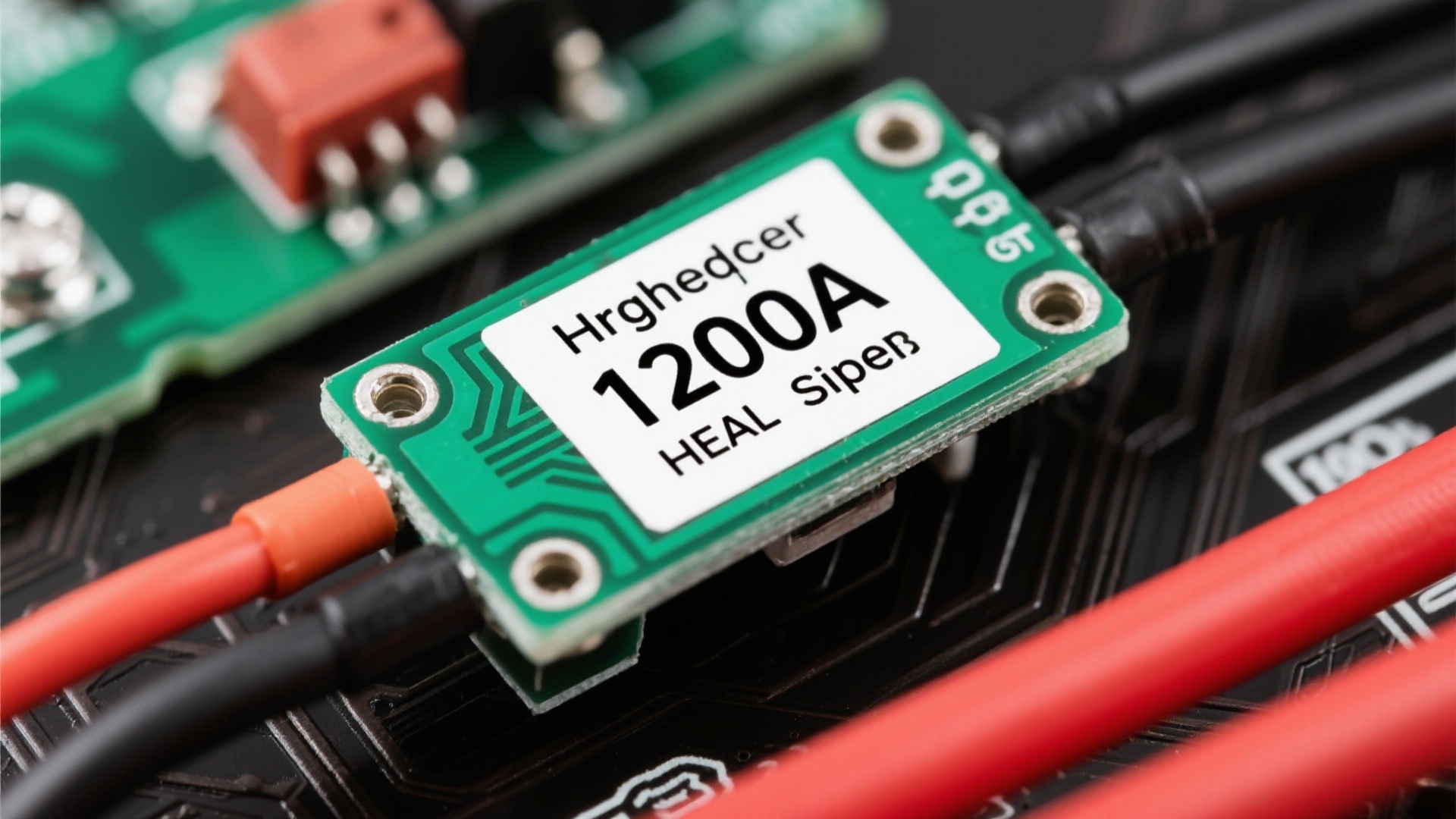The LT1074 family has been a long-standing choice for multi-amp bipolar switching regulator designs in industrial and legacy power rails, typically operating near 100 kHz and deployed where robustness and simple thermal management matter. This article provides a focused breakdown of the LT1074IT7: key points extracted from the official datasheet, how to interpret the electrical specs, practical layout and component-selection guidance, example circuits, and a hands-on implementation checklist. Expect references to datasheet tables and device specs where precision is required.
All guidance below is grounded in the manufacturer’s published device tables and field-proven design practice; where numerical precision is critical the reader should verify values against the official datasheet and the latest device revision.
1 — Overview: LT1074IT7 & Family Context (background)
Part identity & common variants
Point: The LT1074 series is a legacy bipolar switching regulator family; the LT1074IT7 is a specific suffixed part used in power designs requiring several amps of output current. Evidence: Manufacturer documentation distinguishes LT1074 family parts (fixed and adjustable versions) and the related LT1076 device family which targets different pinouts and performance trade-offs. Explanation: The suffix (for example IT7 or PBF in distributor records) typically encodes package type, temperature grade, and lead finish—common packaging includes TO-220-7 style packages (often referenced as PZFM7/TO-220 variants) which are favored for board-attach heatsinking. Link: Consult the official product page and the datasheet for the full list of SKUs and distributor catalog references to confirm exact ordering codes and temperature grades.
Typical application space & strengths
Point: The family is used for single-output step-down converters serving 5 A and higher loads in industrial and legacy systems. Evidence: Application notes and reference circuits historically show the LT1074 used for motor-control rails, industrial logic supplies, and intermediate DC rails where a bipolar process switch offers rugged current handling and predictable current-limited behavior. Explanation: Designers choose this family for predictable current limiting, straightforward external component choices, and the ability to use conservative switching frequency (~100 kHz) to balance inductor size versus efficiency; the bipolar switch device also provides a particular safe-operating-area characteristic useful in harsh environments.
Key calling specs at a glance (one-line summary)
Point: Key parameters to check immediately are input voltage range, peak switch current rating, nominal switching frequency, typical efficiency band, and pinout. Evidence: The datasheet tables list these parameters under “Absolute Maximums,” “Recommended Operating Conditions,” and “Electrical Characteristics” and should be consulted for design limits. Explanation: As a snapshot, expect an industrial VIN range compatible with unregulated 12–30 V rails (verify for the chosen variant), a peak switch current sufficient for 5 A continuous outputs with margin, a nominal switching frequency near 100 kHz, and typical full-load efficiencies in the 70–85% range depending on VIN/VOUT and external component choices. Note: full numeric values and pin assignments must be taken from the official datasheet table for final design.
2 — LT1074IT7 Complete Specs & Electrical Parameters (data analysis)
Absolute maximums & recommended operating conditions
Point: Understanding absolute maximums versus recommended operating conditions is essential to avoid latent failures. Evidence: The datasheet separates non‑reversible stress limits (absolute maximums) from recommended operating conditions and provides temperature- and voltage-related derating guidance. Explanation: Designers must treat absolute maximum ratings (e.g., maximum VIN, maximum VSW, maximum junction temperature) as limits never to be exceeded even briefly. Recommended operating conditions define the safe design envelope where guaranteed electrical characteristics apply; designs should include margin (typical derating of 10–20% on voltage and current) and consider thermal derating under elevated ambient conditions. Link: When implementing, label test conditions in your documentation (VIN, load, ambient) to match datasheet test conditions for meaningful comparisons.
Parameter (example)Representative Value*Test Condition / Notes
Absolute VIN maxSee datasheetDo not exceed; confirm variant table
Peak switch currentDevice table valuePulse limits apply; consult SOA
Nominal switching frequency≈100 kHz (typical)Frequency varies with part and conditions
Junction temperature rangeDevice tableFollow thermal derating guidance
Point: The table above is a placeholder; exact numbers must be copied from the official datasheet table and annotated with test conditions. Evidence: The manufacturer’s tables provide the authoritative values. Explanation: Always transcribe the datasheet numerical limits into the project’s constraint table with the same temperature and test-condition notes to avoid mismatches during validation.
Electrical characteristics: DC & AC parameters
Point: Electrical characteristics split into DC (Vref, line/load regulation, quiescent current) and AC/switching (frequency, peak current, rise/fall times). Evidence: Datasheet electrical-characteristics tables show guaranteed min/typ/max columns under defined test conditions (e.g., TJ = 25°C, specified VIN and load). Explanation: When designing, pay close attention to which column (typical vs maximum) applies to your margining: use max values for current limits and thermal calculations, and typical values for performance expectations. For switching behavior, note that rise/fall times and propagation delay determine switch-node ringing and snubber requirements—measure these on the bench if loop stability or EMI is marginal.
Thermal, SOA and reliability-related specs
Point: Thermal resistance (θJA/θJC), safe operating area for the switch, and junction temperature limits drive heatsink and layout decisions. Evidence: The datasheet provides θJA and θJC for the package and often an SOA graph for the internal switch demonstrating allowable VDS vs current for different pulse widths and ambient temperatures. Explanation: For a TO‑220‑7 package do a simple thermal calculation: estimate power dissipation (P = ILOAD × (VIN−VOUT) × duty losses + switching losses), convert to junction rise via θJA (ΔTj = P × θJA), and verify Tj remains below the recommended maximum under worst-case ambient. If the predicted ΔTj is large, specify a heatsink or use forced convection; add margin for worst-case manufacturing variability and long-term reliability. Link: Use the datasheet SOA plots when choosing application duty cycles and transient limits.
3 — Design & Layout Guidelines (method / how-to)
Component selection & reference BOM (inductors, diodes, caps)
Point: Correctly sized passive components are as important as the regulator choice. Evidence: Reference designs and datasheet application notes list recommended ranges for inductance, diode types, and capacitor ESR to achieve stable operation. Explanation: Select an inductor with saturation current at least 20–30% above the peak switch current and with DCR low enough to limit conduction loss but high enough to damp ringing. Use a fast, low-recovery Schottky catch diode sized for average output current and peak reverse voltage; for higher efficiency consider synchronous replacements only where gate-drive compatibility exists. For capacitors, prefer low-ESR electrolytics or ceramic/output capacitor blends per datasheet guidance; high ESR can improve stability in some compensation schemes but increases ripple and heat—balance per the datasheet’s recommended values. Example ranges: for a 5 A design, inductor values often fall in the 10–33 μH range depending on switching frequency and ripple current targets; output capacitance in the hundreds to thousands of μF may be required for low ripple and transient control (verify with datasheet and transient targets).
PCB layout & grounding tips for LT1074IT7
Point: Layout governs EMI, stability, and thermal performance. Evidence: Application notes highlight minimizing high‑di/dt loop area and placing input capacitors close to the device. Explanation: Keep the switch loop (switch node, input cap, diode/inductor) compact and use wide copper for current paths. Place the input decoupling capacitor adjacent to the VIN and ground pins to reduce common impedance. Ensure thermal path from the TO‑220 tab to a heatsink or copper pour is unobstructed; implement a solid analog ground plane and route high-current returns directly to the device’s ground pin to avoid shared returns with sensitive feedback networks. Add small RC snubbers or a ferrite bead across the switch node if ringing or EMI exceed limits. Mark thermal vias and solder the tab per the package mounting recommendations for best θJC performance.
Setting output voltage & compensation
Point: The output voltage is set with an external resistor divider and, when necessary, compensation network components. Evidence: The datasheet gives VREF and feedback thresholds plus example divider formulas. Explanation: Use the reference voltage in the datasheet to compute the resistor divider: Rtop = Rbottom × (VOUT/VREF − 1). Choose resistor values that keep the divider current sufficiently above noise but below loading that increases quiescent power—typical total divider currents are in the 50 μA to 1 mA range. If external compensation is required use the datasheet’s recommended component values as a starting point and tune on the bench: check loop stability with a load step and scope the control node for ringing or excessive phase lag. For a 5 V output using a 1.25 V reference, Rbottom = 10 kΩ gives Rtop ≈ 30 kΩ (simple example; confirm VREF from datasheet).
4 — Typical Application Circuits & Case Studies (case)
Standard step-down reference designs
Point: The datasheet typically provides canonical circuits: fixed-output, adjustable, and sometimes negative-output topologies. Evidence: Reference circuits illustrate required component choices and expected performance envelopes. Explanation: Fixed-output designs simplify the feedback network but limit flexibility; adjustable versions use the resistor divider and may include compensation parts. Negative outputs, when shown, demonstrate how the switching topology can be adapted with additional components. For each reference circuit examine the listed component values, thermal notes, and the expected output ripple/transient numbers—replicate these in prototype before optimizing for cost or size.
Example: 12V→5V, 5A design walkthrough
Point: A pragmatic example helps translate datasheet numbers into a working BOM. Evidence: Combine the device characteristics (switch current, switching frequency) with passive selection rules to derive component values. Explanation: For 12 V input to 5 V output at 5 A, first calculate required duty ratio (roughly VOUT/VIN minus diode drop considerations) and expected switch current including ripple. Choose an inductor with Isat ≥ 6.5–7 A, low DCR to keep conduction losses low, and L value to limit ripple to ~20–30% of IOUT. Select a Schottky rated >VOUT with average current ≥6 A and low forward drop at expected current. Estimate efficiency by summing conduction and switching losses—typical predicted efficiency will be 75–85% depending on inductor loss and diode drop. Thermal margin: compute worst-case dissipation and choose a heatsink/airflow that keeps Tj under the datasheet’s recommended limit with margin. Verification: measure switch-node waveform for acceptable ringing, output ripple under load, and transient recovery in response to a step from 0.5 A to 5 A.
Troubleshooting common behavior & failure modes
Point: Common issues include oscillation, overheating, poor transient response, and excessive ripple. Evidence: Field reports and datasheet application notes list root causes and remedies. Explanation: If oscillation appears, check feedback network values and layout—move feedback sense trace away from switch-node noise and use proper grounding. Overheating often arises from underestimated conduction or switching losses; confirm inductor DCR and diode Vf, and re-evaluate θJA assumptions. Poor transient response can be improved by increasing output capacitance, reducing ESR where appropriate, or tuning compensation. If excessive ripple persists, verify inrush filtering and input decoupling and add a small LC filter or adjust snubber components. Use a systematic test checklist: isolate variables (load, VIN, layout) and make one change at a time to identify the corrective action.
5 — Procurement, Testing & Implementation Checklist (action)
Sourcing, part numbering & compliance
Point: Correct part ordering and awareness of lifecycle status prevents assembly and field trouble. Evidence: Distributor listings and manufacturer product pages show suffixes like PBF (Pb‑free) and packing codes. Explanation: Read the full part number (example: part# with suffixes) to confirm package, temperature rating, and lead finish. Cross-reference manufacturer part numbers against distributor SKUs and check for obsolescence notices; if the LT1074 family is flagged as legacy, consider cross-references or modern replacements. For compliance, record RoHS/Pb-free status, and retain the supplier’s certificate of conformance in procurement records.
Test plan & verification checklist for production
Point: A concise validation matrix ensures production reliability. Evidence: Typical verification plans include input-range sweep, load regulation, transient load step, thermal cycling, and EMI pre-checks. Explanation: Define pass/fail criteria: output within ±2% at full load, transient recovery within target time, thermal rise within design allowance, and EMI below specified limits at key bands. Suggested tests: VIN sweep from minimum to maximum recommended VIN, steady-state thermal soak at max ambient, step-load from 10% to 100% load to measure recovery and overshoot, and board-level conducted immunity/EMI pre-scans. Automate test sequences where possible to speed throughput during production validation.
Final deployment & maintenance notes
Point: Field longevity benefits from derating and spares planning. Evidence: Reliability practice recommends component derating and documented maintenance intervals. Explanation: Apply conservative derating for the switch current and junction temperature; keep spares for the active regulator and critical passives (inductors, diodes, electrolytic caps) in service kits. Document power-up sequencing requirements and interactions with system firmware that may enable/disable rail sequencing. Plan for periodic inspection of electrolytic capacitors and temperature-stressed components in long-running deployments.
Summary
The LT1074IT7 is a robust member of the LT1074 family; using the official datasheet to extract device limits and application circuits ensures correct specs and avoids field issues—verify ordering codes and package tables before procurement.
Design focus should be on appropriate inductor saturation margin, low-loss diode selection, and tight PCB layout to minimize the switch loop and thermal resistance; always match test conditions to datasheet tables when comparing results.
Follow a short validation plan (VIN sweep, load regulation, transient step, thermal soak, EMI pre-check) and maintain a procurement record of part numbers and compliance certificates to reduce production risk and simplify maintenance.
Frequently Asked Questions
What should a designer verify in the LT1074 datasheet before choosing the part?
Designers should confirm absolute maximums, recommended operating conditions, peak switch current, switching frequency, thermal resistance, and the SOA graphs in the datasheet. These entries determine maximum VIN, allowable pulse currents, heatsinking needs, and whether the part meets system safety and thermal requirements under the intended duty cycle.
How does one size the inductor and diode for a 5 A output using this regulator family?
Select an inductor with saturation current at least 20–30% above the peak switch current and low enough DCR to meet efficiency targets; choose a Schottky diode rated for the average output current and peak reverse voltage with low forward drop. Use ripple-current targets (20–30% of IOUT) to pick inductance and verify thermal dissipation for both passive parts.
What are the most effective PCB layout changes to reduce EMI and improve stability?
Minimize the high-di/dt switch loop area by placing the input decoupling capacitor adjacent to VIN and ground pins, route the switch node minimally, provide a solid analog ground plane, and separate sensitive feedback traces from the switching node. Add snubbers or ferrite beads at the switch node only if measured ringing causes EMI or instability.




































